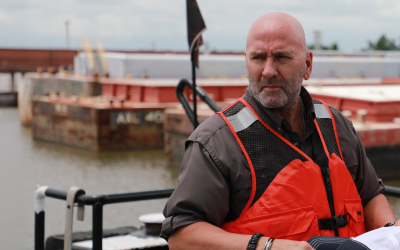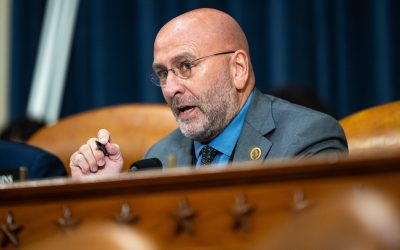It’s no secret there have been some issues for folks trying to board early morning flights at Lafayette Regional Airport lately. Those not making their flights despite arriving hours early have vented their frustrations on social media.
The issue, which seemed to arrive overnight, is an unintended consequence of a change in an airline flight schedule, U.S. Rep. Clay Higgins said Thursday at a groundbreaking ceremony for Lafayette’s terminal-to-be.
There are three early morning flights going out of LFT. Earlier this year, one of those moved from 8:30 a.m. to 6:30 a.m., he said.
“They had a right to do that, and yet what that left the travelers with, including myself, was your three major flights leaving in the morning all within 45 minutes of each other,” the congressman said.
With only one Transportation Security Administration (TSA) screening line, people aren’t able to get through quickly enough to make it onto their plane.
Higgins is well-acquainted with the issue, as both a traveler and a lawmaker. He’s heard from his constituents as well as the other people in line with him. He flies out of Lafayette when going to Washington, D.C. each work week.
“I fly out of Lafayette almost every week,” Higgins said. “I’ve been in those lines.”
Plus, he’s collected a “stack of complaints” from folks to help them resolve the problem. Higgins and some of his senior staff met last week with airport officials to discuss possible solutions.
“We have some ideas,” he said.
But there are a lot of steps to this process.
“Logic would tell us, ‘Well, just add a line, right?'” he said.
He cautions it’s not that simple.
“We’re dealing with sort of an architecturally limited space,” Higgins said. “You have mandates regarding what’s needed for additional equipment.
“What has to happen,” he said, “is the airport has to be willing to invest in some architectural changes at the TSA area, which they’re willing to do, in order to make space for an additional screening line and an additional baggage X-ray machine. And then each airline has to officially agree with that change because there’ll be some loss of seating space in the terminal area.”
All four airlines will need to officially authorize these changes, which could be another process.
“Once presented with this plan the airlines have to send it up the chain to their board of directors, CEOs, etc., and then they have to send their letter back,” Higgins continued, explaining how this could take a while.
Ultimately the Federal Aviation Administration, TSA and Department of Homeland Security will need to authorize the changes before they are made, he said.
All of this, which Higgins called “the big, temporary fix” to the line problem, he expects could take about six months.
The real solution, he said, is the new terminal being celebrated at the groundbreaking. But something has to be done before that is completed two years from now.
“In the meantime, we can’t have people missing their flights,” the congressman said.
So he has an idea for a more immediate temporary fix.
“We’re seeking some immediate adjustments … regarding how the line itself is managed,” he said, adding, “kind of like working traffic.”
“So we expect that there can be a faster, sort of temporary adjustment on traffic control as we move towards the also temporary fix,” Higgins said.
These are “two fixes we’re aggressively pursuing so folks don’t miss flights,” he said.
He and his staff will approach TSA with all of these ideas once he returns to Washington, D.C. next week, he said.
“You and I are thinking as Americans, ‘Just add the damn line,’ right?” Higgins said with a laugh. “It’s just not that simple. But we are working through this process.”



